“The spoon had been lying under a cupboard in the cellar of the seller’s parents’ house for more than 60 years.”
VFC says: Please enjoy this post written and photographed by Gerhard.
I recently had the opportunity to buy a large spoon from Dehillerin via classified ads in Germany. At first I had my doubts as it showed heavy signs of use in the seller’s photos, but it wasn’t expensive. It didn’t take much effort to polish it up either.

As I always ask the sellers for the story behind it, and I was pleased to hear the following story.
The spoon had been lying under a cupboard in the cellar of the seller’s parents’ house for more than 60 years and was only discovered when they were clearing it out. The house had been built in 1910 and was a kind of “Bed & Breakfast” near Saarbrücken, a town in the southwest of Germany on the French border. Maybe I should move a few cupboards in our cellar — who knows?
Thanks to VFC’s field guide, the stamp can be dated between 1890 and 1910.

The seller assumes that the spoon was once used by his grandmother to make plum jam, as there were many plum trees in the garden of the house. Nevertheless, I doubt that his ancestors were the first buyers of the spoon — did Dehillerin already export goods abroad at that time? I could imagine (but this is very speculative) that the spoon came to Saarbrücken by another route: Saarland was a French occupation zone after WW2, so it is quite conceivable that it found its way here at that time.
In the Dehillerin catalog of 1896, the spoon is shown under number 118 on page 16 and is described on page 25 as “Cuillère à sorbets”.
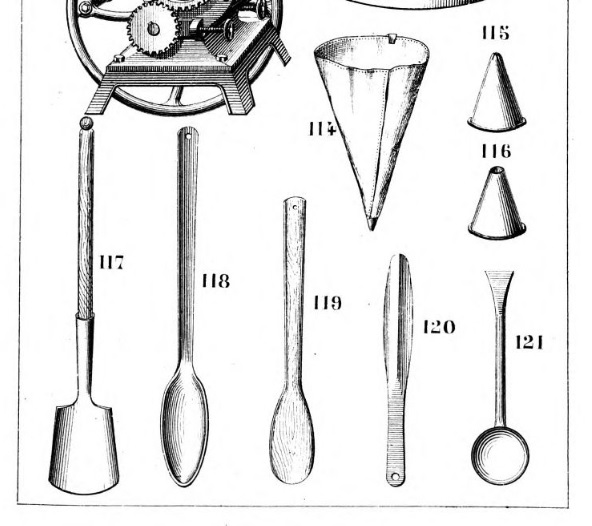

Since it is also described there that the spoon is tinned, I went in search of clues. It is indeed completely bare copper — there are only a few square millimeters in the transition area between the spoon and the handle, which may indicate earlier tinning. But that is very speculative, and perhaps it was also available un-tinned.

The entire spoon is made from one piece, presumably forged (hammered). The hammer marks that shaped the spoon are clearly visible on the spoon itself.


The handle is incredibly thick. Just behind the bowl of the spoon it is 6.6mm thick and tapers to 3.3mm towards the suspension eye.

There it becomes wider and wider to the same extent. It widens from 13mm to 26mm. This means that the cross-sectional area does not change and always remains the same!
Proof: 13mm x 6.6mm = 85.8mm² = 26mm × 3.3mm
The spoon is 470mm long in total: the handle is about 330mm and the ladle is an additional 140mm. It weighs 458g. To give you a better idea of the size, here is a photo with normal cutlery for comparison.

VFC says: Gerhard, thank you so much for this charming story. I have a couple of long-handled utensils like yours, and they have an unexpectedly solid feel to them — perhaps because they contain such a significant amount of copper. Alternatively, could there be a reinforcing bar of metal within the shaft, perhaps an iron bar similar to the iron ring inside a bowl’s rolled rim? But if so, I’d expect the seam along the shaft to be more belabored, and I’d also look for damaged examples where the iron core had separated from the cladding — and I have never seen an example with either defect. Perhaps the simple answer is the correct one, which is that these long-handled utensils are treasures made of thick pure copper. I am so glad that this particular treasure made its way to you, and that you, in turn, have shared it with us. Thank you!

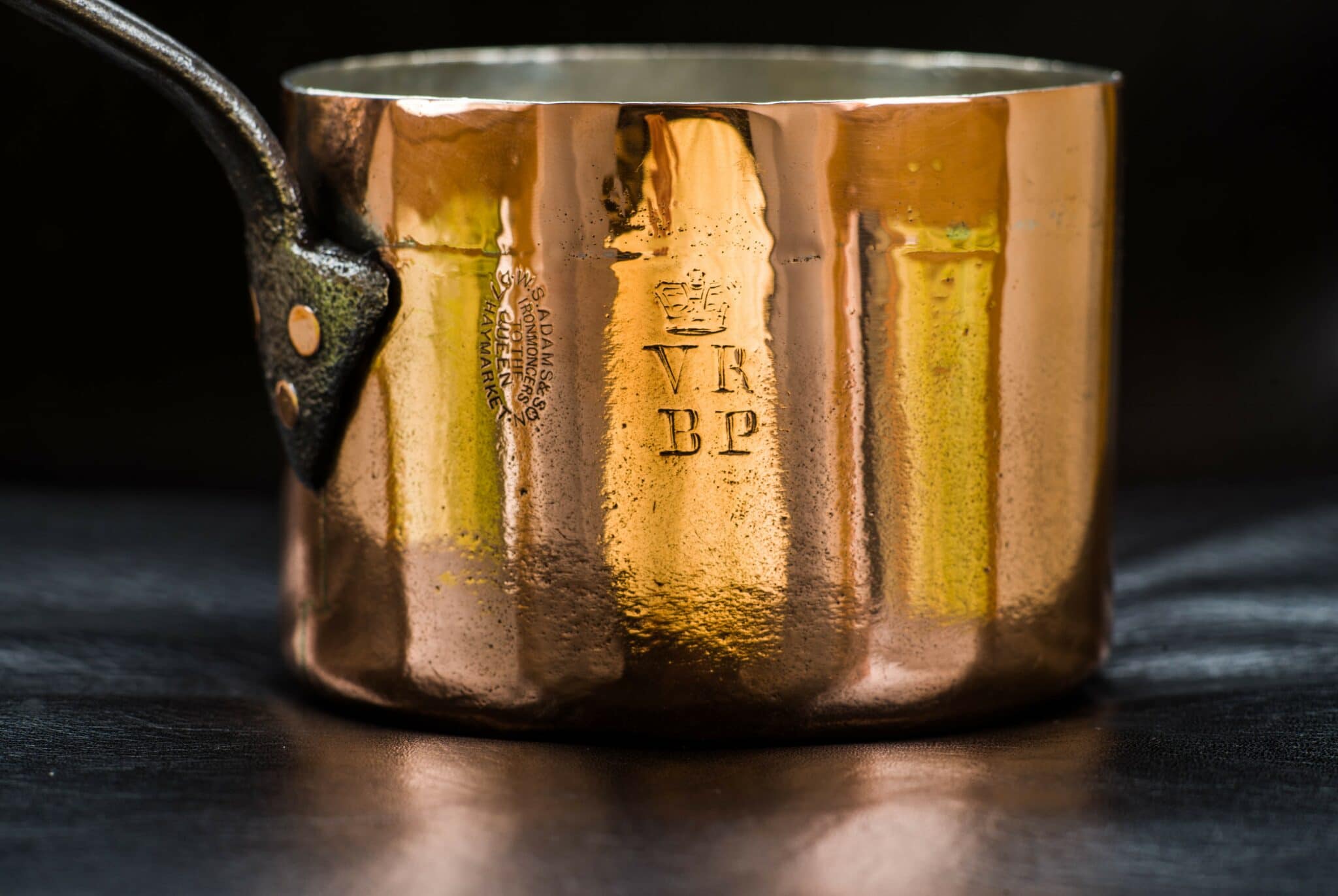

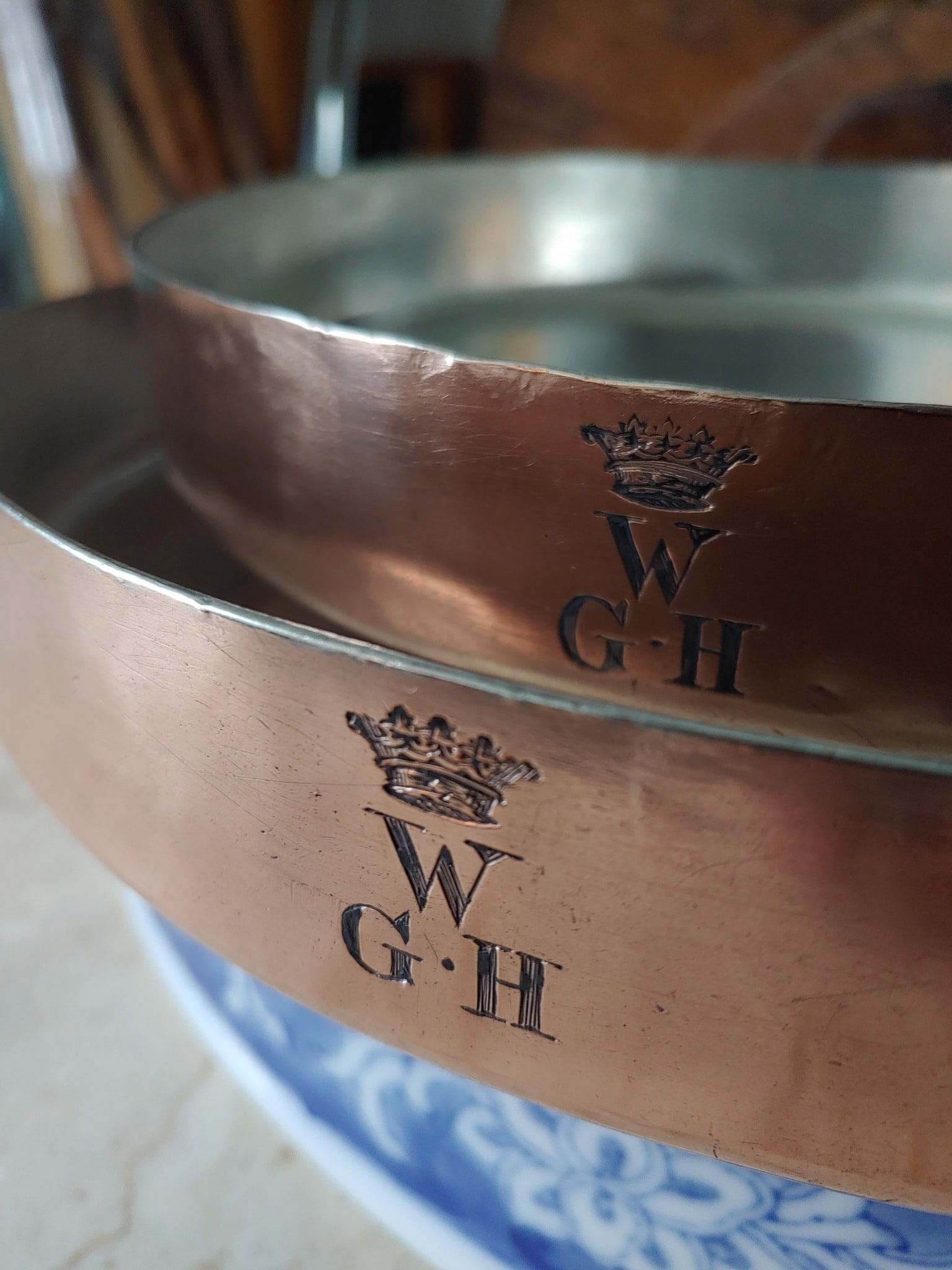
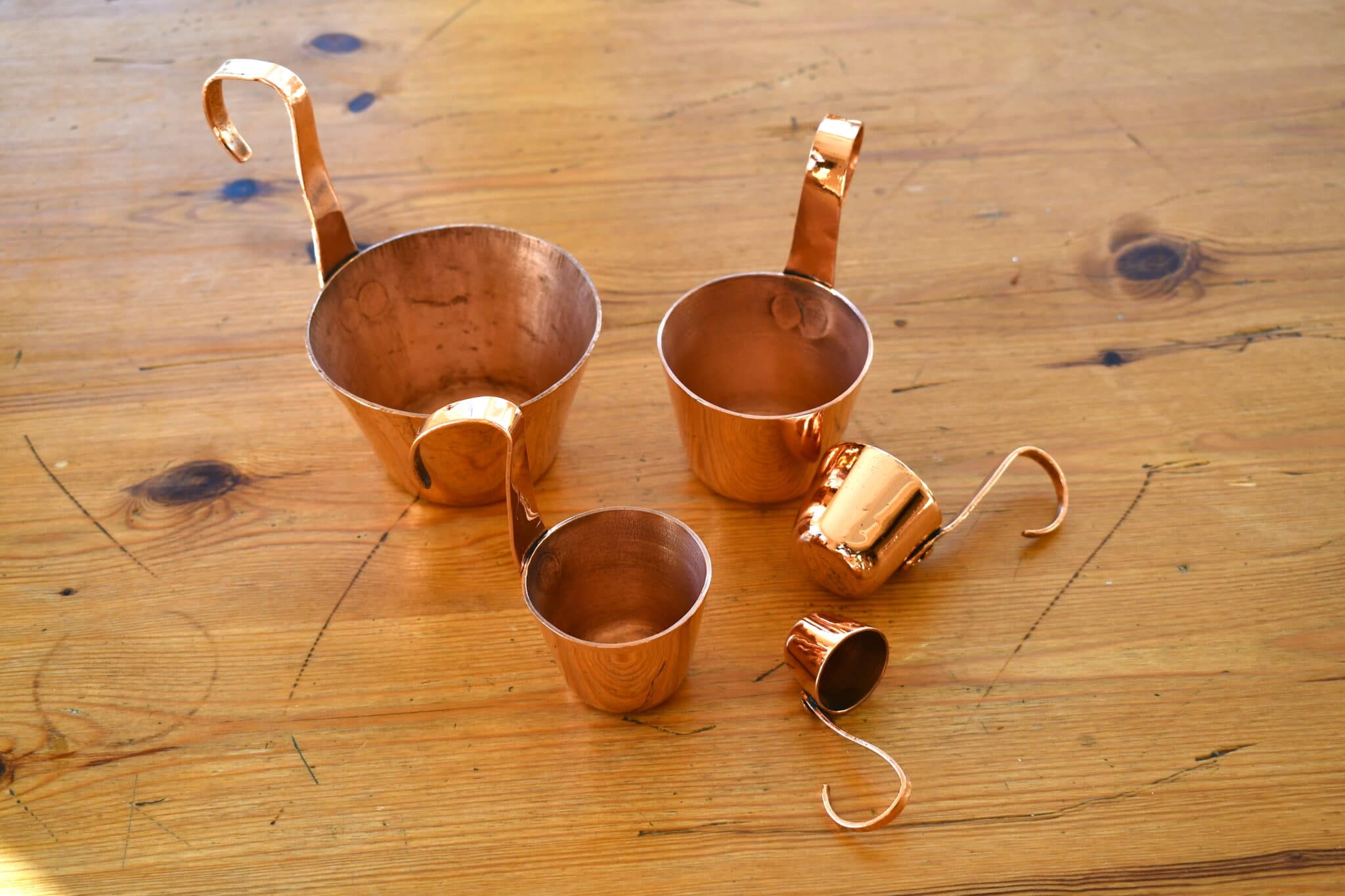
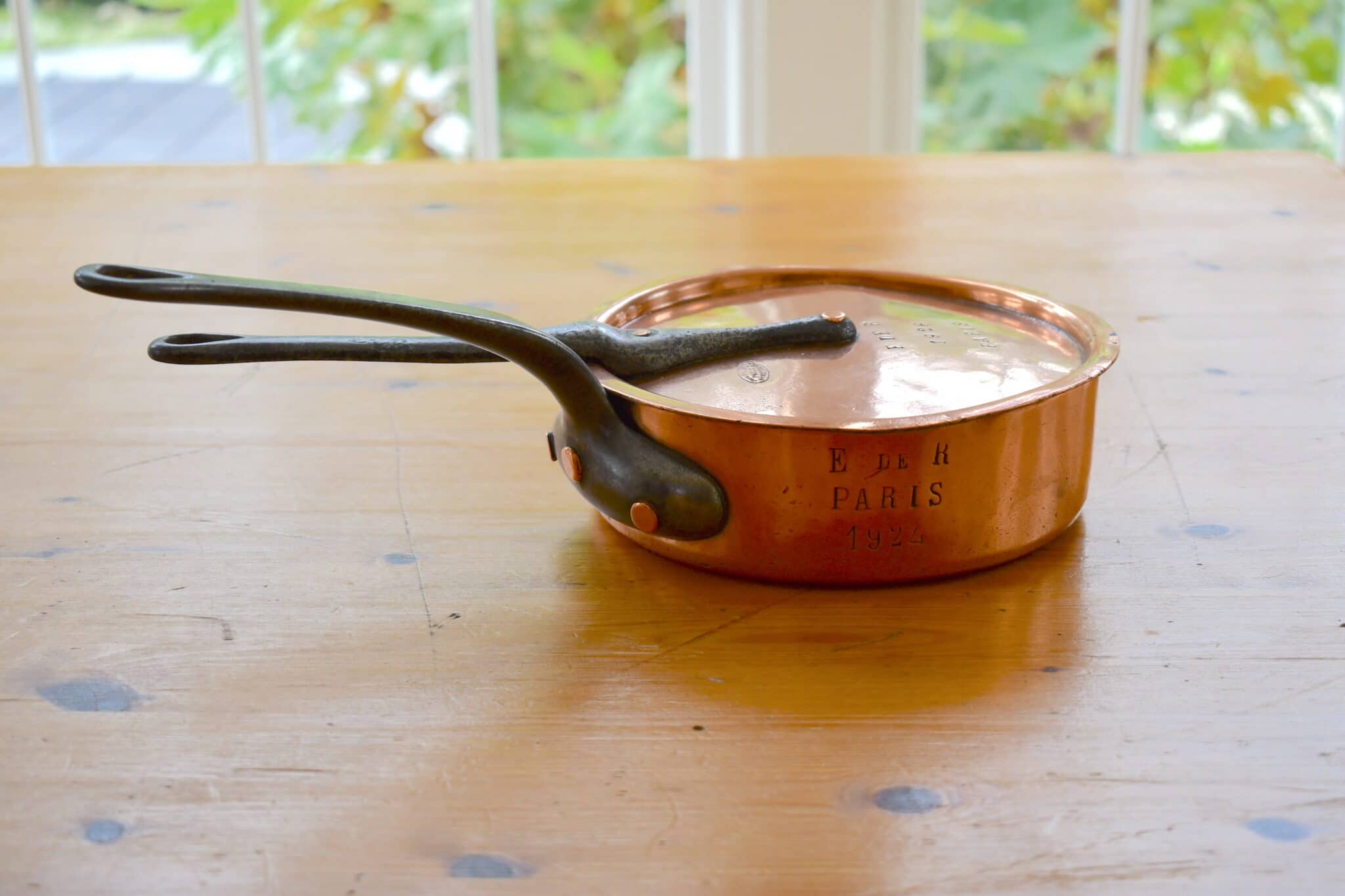
Nice find! I believe it was originally coated with tin.